
Windmills of Montmartre, Maurice Utrillo.
Paris is not exactly hilly, but there are a couple of high points in the city where one can easily catch the breeze. Back when Paris had a flourishing grain milling industry, these hills were dotted with numerous wind mills—more than three hundred, some say.
Enormous quantities of grain arrived from the Americas and mills in the area ground them up into fine flour for local consumption. Bread was the staple food for the poor French peasants. During period of abundance, the average wage earner in France spent as much as two-third of his income on bread alone. During shortages, prices could double, dramatically straining the finances of poor French families. As such, grain merchants were often detested and viewed with suspicion. They were accused of adulteration and hoarding grain to artificially raise the price of this vital commodity.
Anyways, these windmills skirting the borders of Paris gave the city a characteristic look, one that never failed to impress visiting foreigners.
These windmills are gone now, but a couple of them still exist, although no longer serving their original function. The most famous of these is Moulin de la Galette, also known as Blute-fin, situated on the hilltop of Montmartre, a rural area just outside Paris’ city walls. Moulin de la Galette has quite a history.

Moulin de la Galette, circa 1885.
The windmill was built in 1622 and was used to mill grains to produce flour, and press grapes for making wine. During the siege of Paris at the end of the Napoleonic Wars in 1814, the Debray family, who owned the mills, defended the windmill like one would defend a castle. Several members of the Debray family was killed in the process. The miller himself was hacked to pieces and his body parts were nailed to the wings of the windmill. During the Franco-Prussian War of 1870, Montmartre was attacked by twenty thousand Prussian soldiers. Again, the owner, Pierre-Charles Debray, was killed and his body strung up on the sails of the windmill.
After the siege, the surviving son of the miller turned the mill into a guinguette, a type of drinking establishment popular during the 19th century. Eventually, the windmill became a cabaret. Wealthy Parisians went to Montmartre to enjoy the pleasures of the countryside with a glass of wine, freshly baked bread and a terrace view of Paris and the Seine below. Great artists such as Renoir, Van Gogh, and Pissarro have immortalized Moulin de la Galette in paintings.
Over its history, the building has experienced a wide range of uses—from open-air cafe and restaurant to music-hall and television studios. In 1924, its owner moved the windmill to its current location at the corner of Girardon and Lepic streets. It is now a private property.
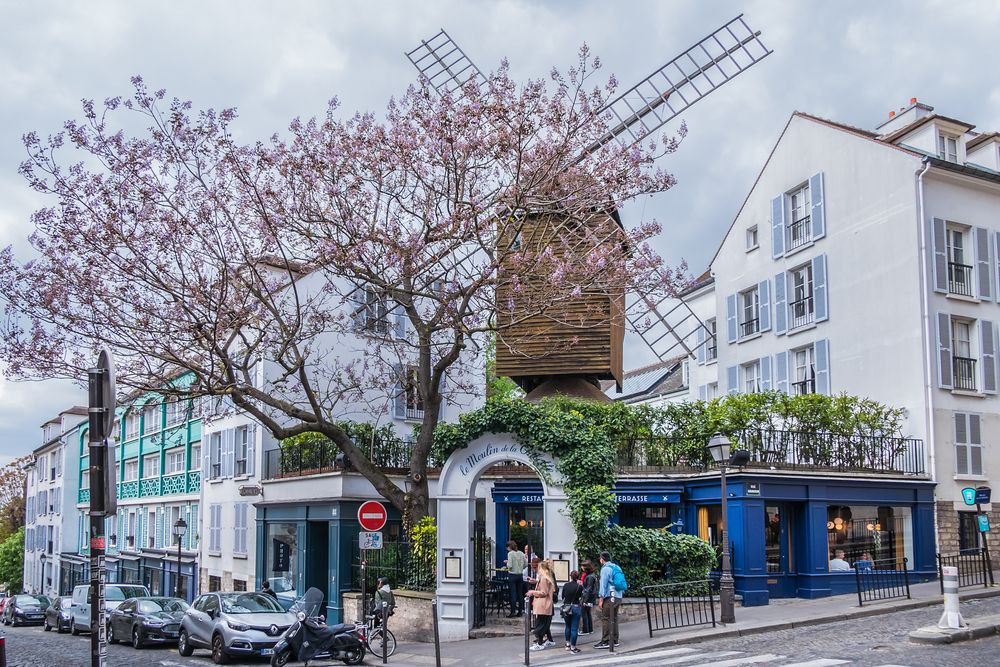
Moulin Radet sitting atop the Moulin de la Galette restaurant. Photo: Kiev.Victor/Shutterstock.com
The other surviving windmill of Montmartre is Moulin Radet, also owned by the Debray family. The windmill now stands atop a restaurant, named after Moulin de la Galette, at its original site. Moulin Radet is more popular than Moulin de la Galette today because it is public and easily accessible from the main road.
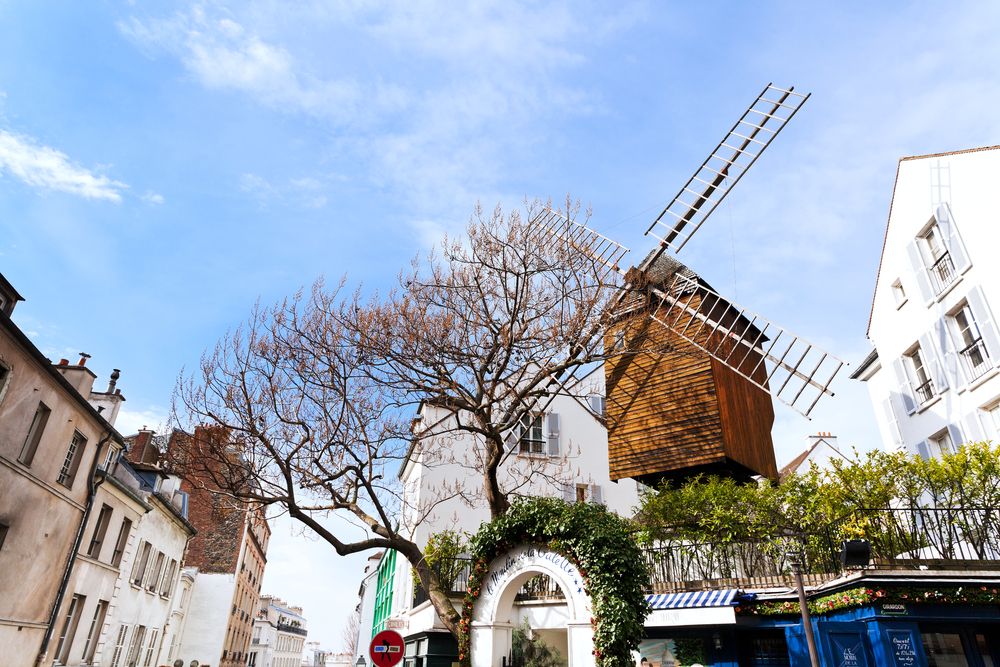
Moulin Radet sitting atop the Moulin de la Galette restaurant. Photo: vvoe/Shutterstock.com
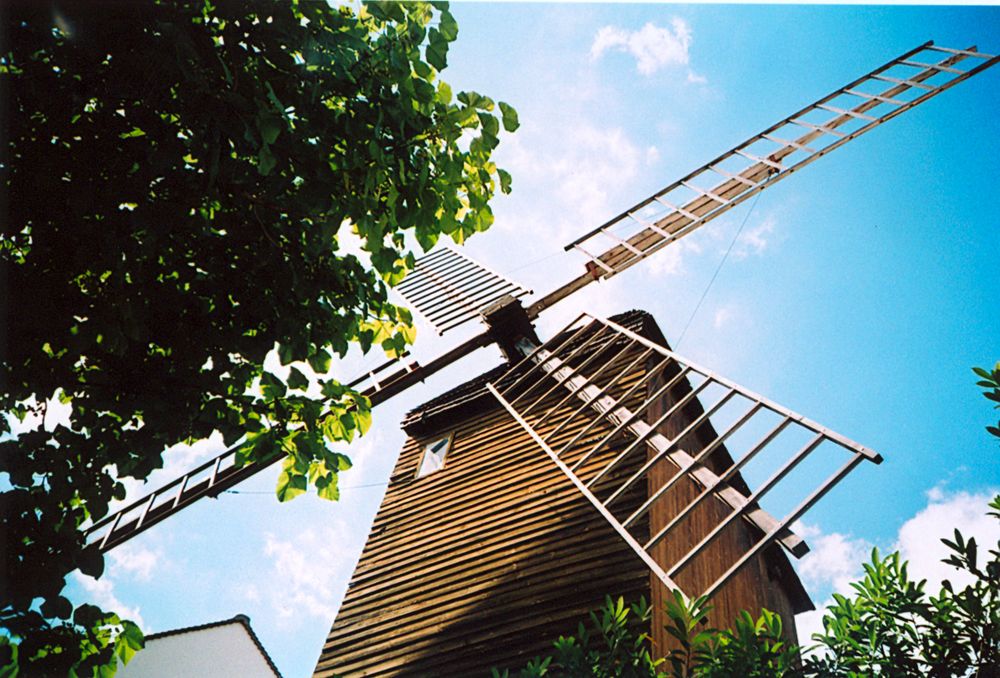
Moulin Radet. Photo: Arnaud Malon/Flickr
In Argenteuil, a rural escape for Parisians, situated about 12 km northwest of Paris, stands another old windmill. The Moulin d'Orgemont was originally an old tower of Blanche de Castille, dating from the 13th century. It was turned into a restaurant in the middle of the 19th century. In 1999, the tower of the windmill was mostly destroyed in a fire, and was later restored to its current appearance. The restaurant is still there.
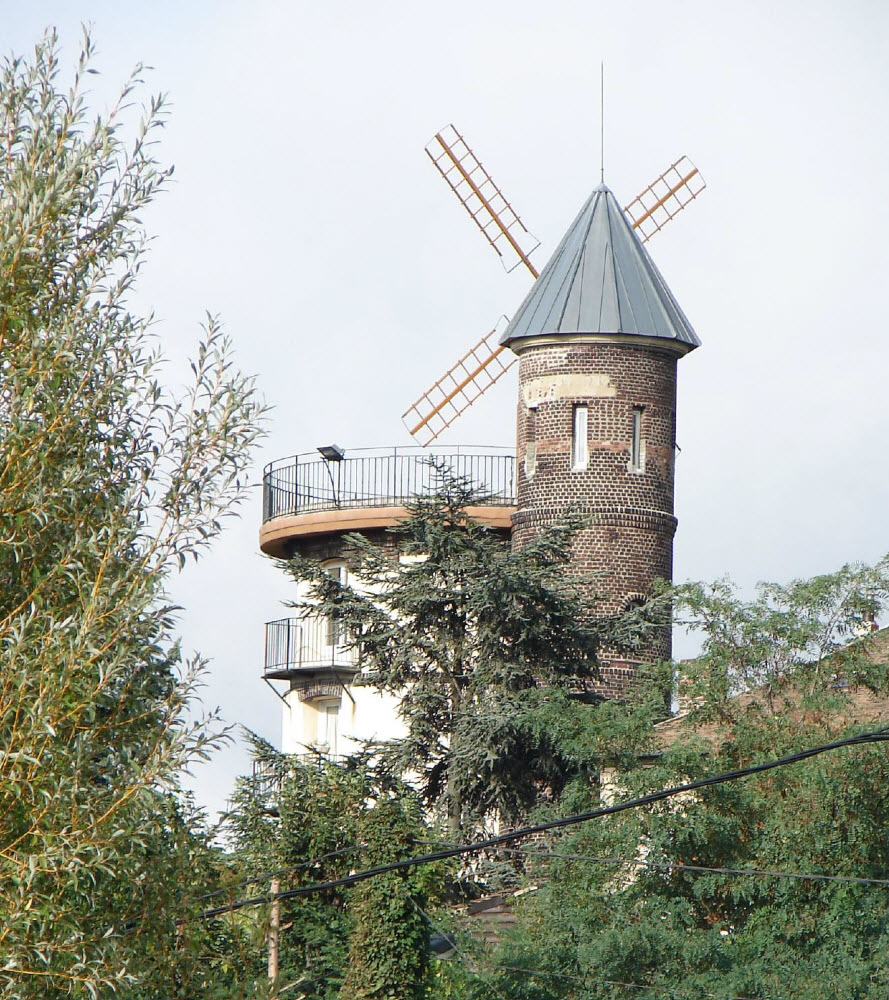
Moulin d'Orgemont. Photo: Julie Kertesz/Flickr
The Moulin de la Tour in Ivry-sur-Seine, a suburb southeast of Paris, is the last working windmill of the region. It was built in 17th century and was operational until the early 19th century. Then for a brief period it became a warehouse and lost its wings. The dilapidated building was almost slated for demolition when the city decided that it was a historic monument and should be saved. It was restored to working order. Moulin de la Tour now makes walnut oil for visitor’s amusement.
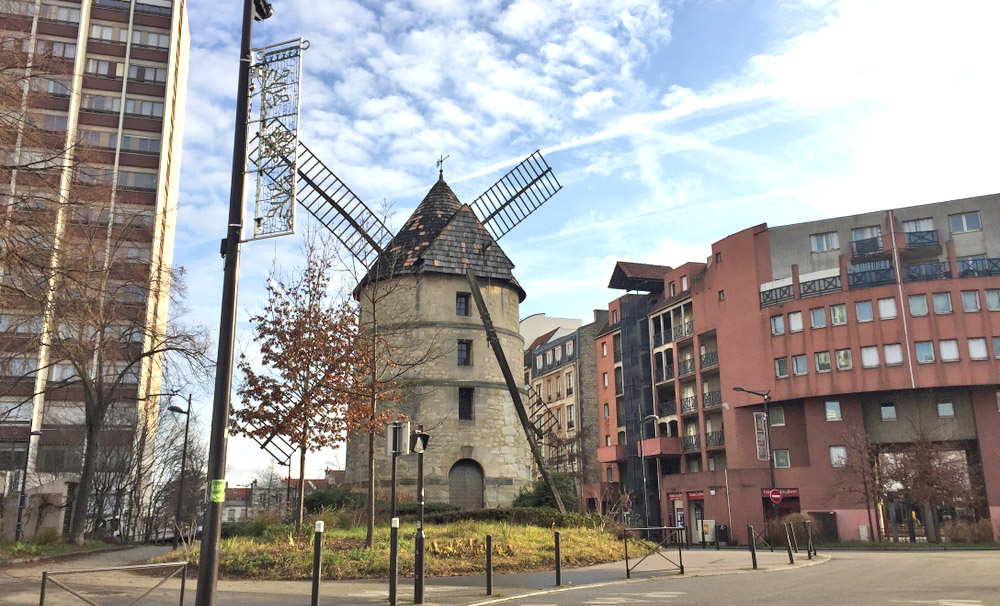
Moulin de la Tour at Ivry sur Seine. Photo: PaolaBe/Shutterstock.com
The Old Longchamp Windmill which stands today on Longchamp racecourse in Bois de Boulogne is a reconstruction. The original was once part of a monastery, and was built in the 13th century. During the French Revolution, when clerics were banished, the abbey along with the windmill was demolished. It was rebuilt on the same foundations when the course was renovated in 1856.
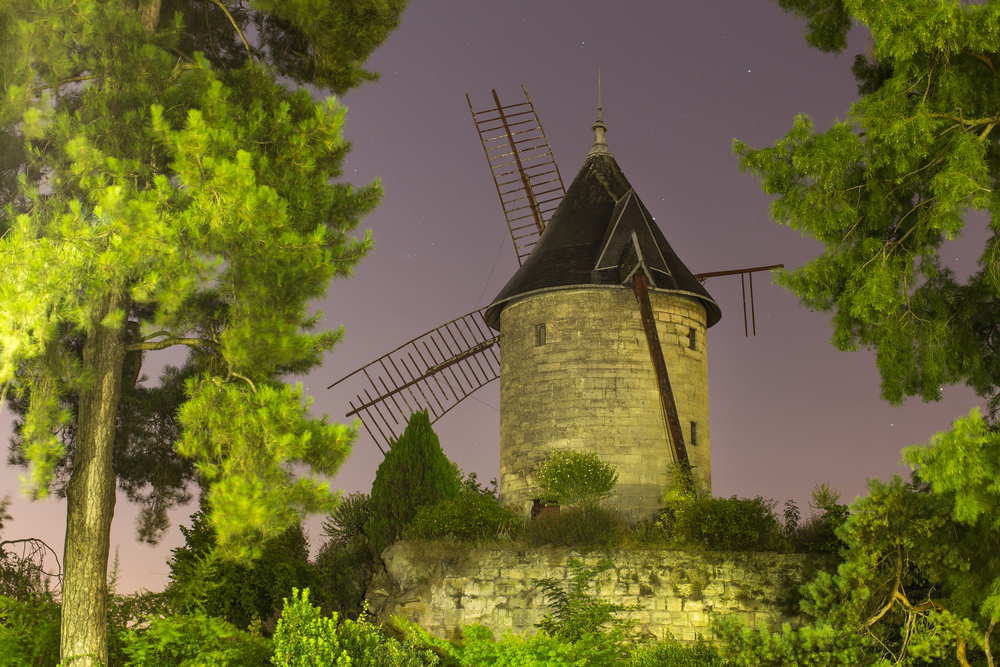
The Old Longchamp Windmill at night. Photo: Sander Groffen/Shutterstock.com
Windmills of Paris in Art
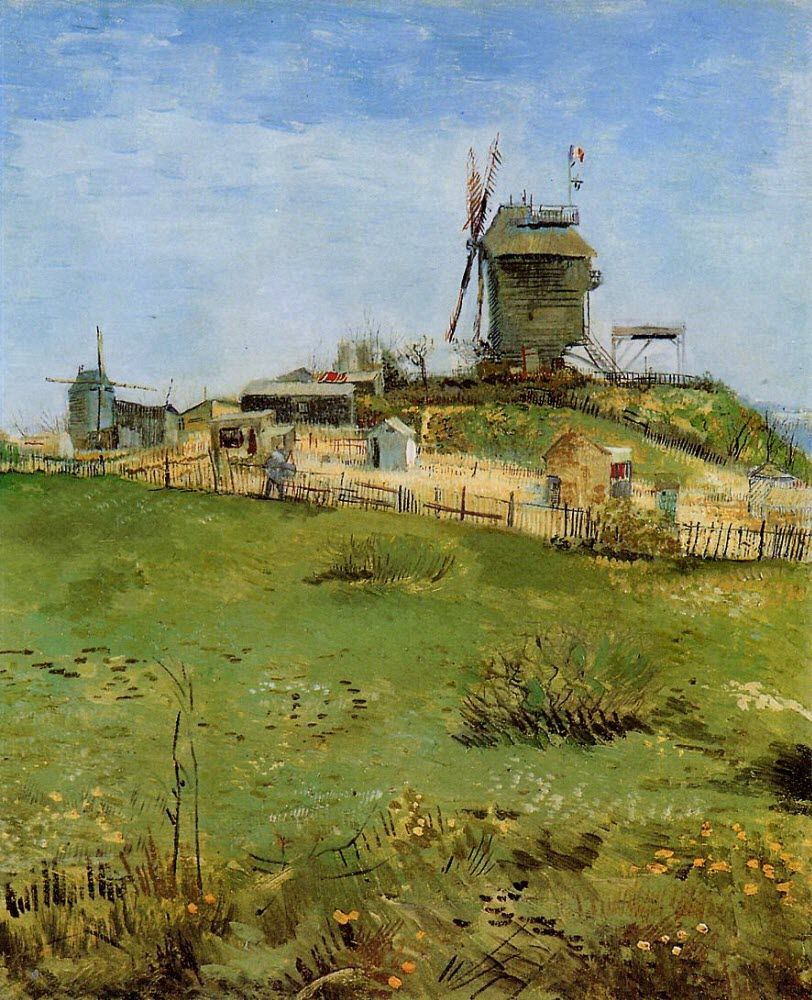
Le Moulin de la Galette, Van Gogh.
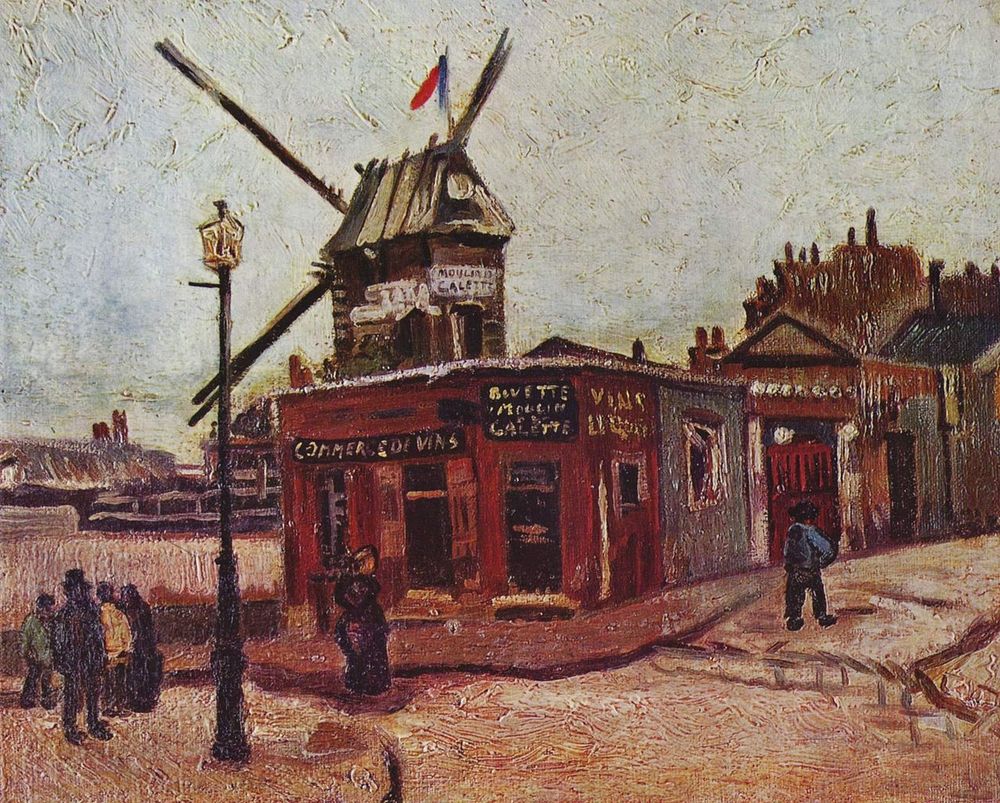
Le Moulin de La Galette, Van Gogh.
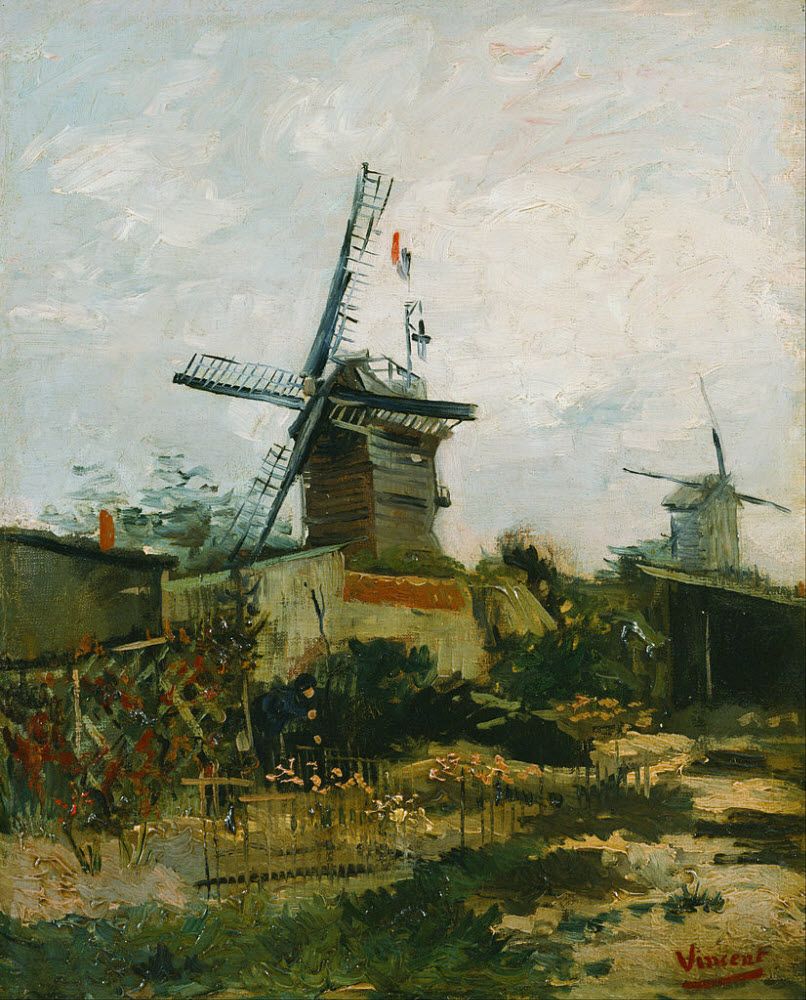
Windmills on Montmartre, Van Gogh.
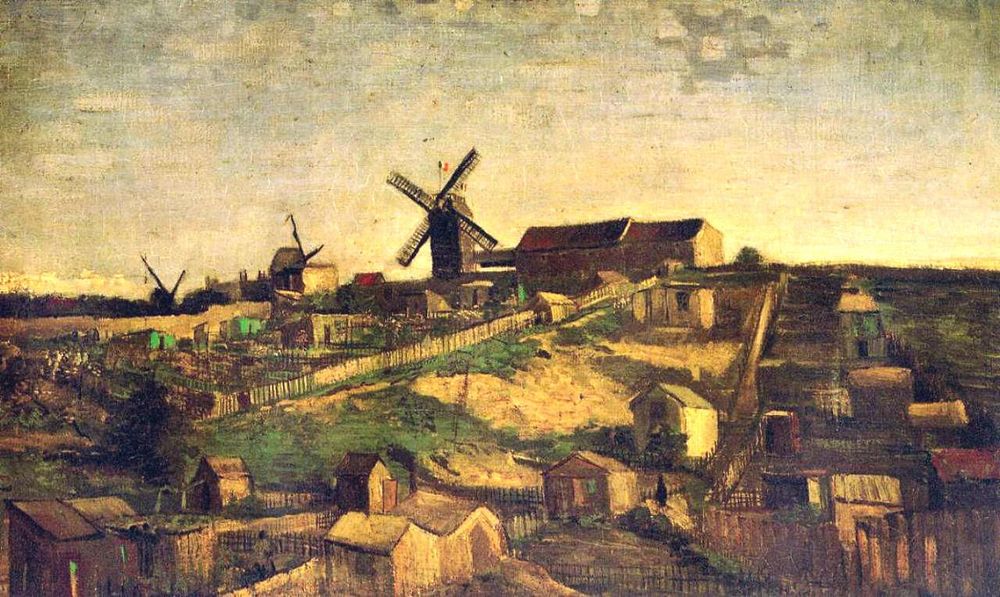
Montmartre the Quarry and Windmills, Van Gogh.

Windmills at Montmartre, George Michel (1763 - 1843)


